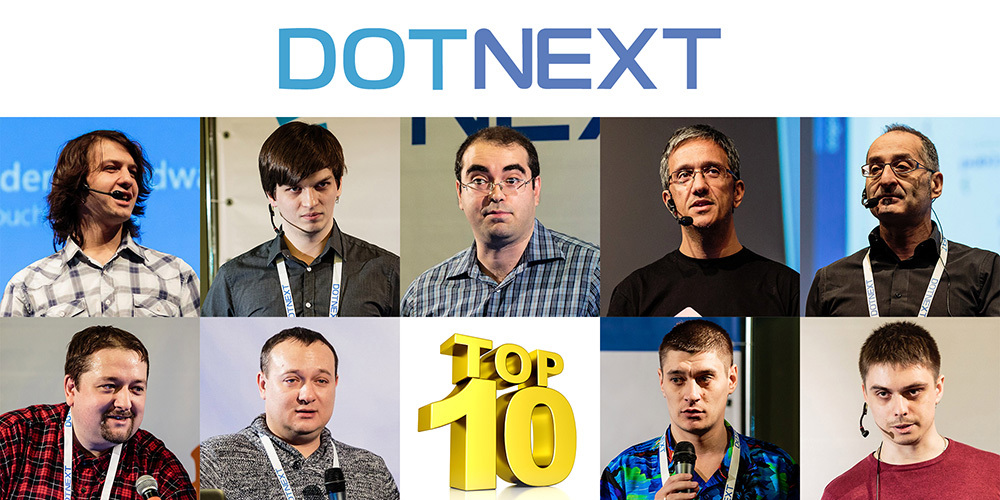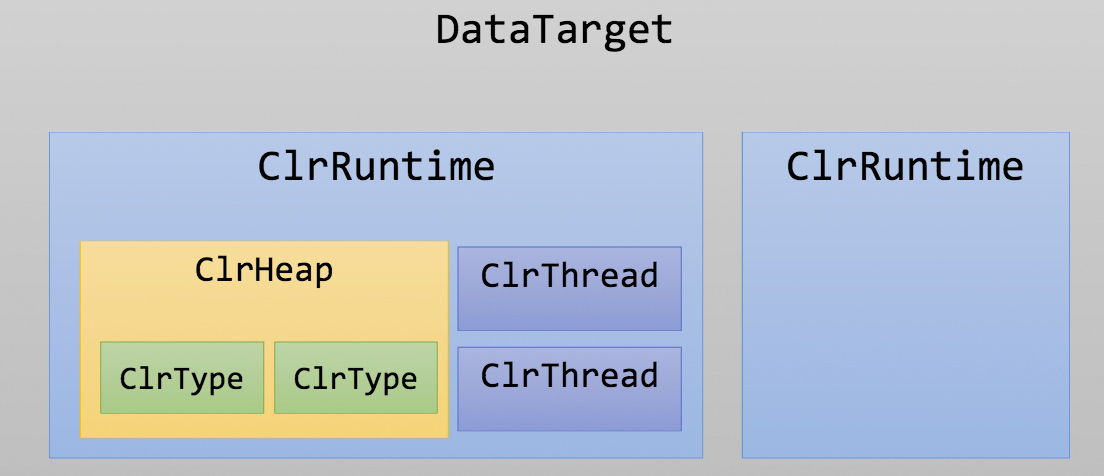Video of the best reports of the .NET conference DotNext 2015 Moscow

In two and a half weeks a large .NET-conference DotNext will be held in St. Petersburg.
The previous DotNext conference was held in December in Moscow. In this post, I, according to the already established tradition, will talk about its best reports (in the opinion of the participants).
')
About 450 people attended the conference, and about 100-150 people watched it online. More than 400 people left us feedback - about 70% of the participants . This percentage allows us to say that our sample is relevant, and the rating is quite objective.
10 place
Alexander ControlFlow Swedes, JetBrains - Design and evolution of C # on the example of properties
Average rating: 4.41
A kind of insight into the history of building a language, allowing you to look at one of the elements of modern C # through the eyes of its developers. The report deals not only with what properties are now, but also about how they evolved from version to version.
9th place
Dino Esposito, JetBrains - Hands-on Experience: What It Means to Design a Domain Model
Average rating: 4.42
Introductory, and therefore rather simple report. The report will be useful to those who make the first steps in DDD, as well as those who want to streamline their knowledge in this topic. With the filing - everything is fine as always. As written in a review - “Dino is a classic of the genre.”
8th place
Andrey DreamWalker Akinshin, JetBrains - We continue to talk about micro-optimizations of .NET applications
Average rating: 4.43
Continuation of this report here a year ago. A report on how different .NET runtimes optimize your code. Hardcore, useful for understanding what is happening. Several stories on how runtime comes with executable code.
(sorry, that video of such terrible quality - “the guilty are already punished in the forest”).
In my opinion, this report lacks some practical conclusions at the end of each story “in real life this such runtime behavior is fraught with the fact that ...”. Then the report would be better to go to the public, which (of course) consists of 95% of practicing C # programmers. DreamWalker , do you hear me, yes? ;)
7th place
Vladimir Ozerov, GridGain - Native code: Managing unmanaged
Average rating: 4.53
Report on the device PInvoke and Reverse PInvoke, equipped with a characteristic rake, working with memory and resources. From the report you will learn what to do when a pointer arrives from your native code - how to work with it, how to make sure that there are no leaks, how to release it, etc.
6 place
Sasha Goldshtein, Sela Group - The Vector in Your CPU: Exploiting SIMD for Superscalar Performance
Average rating: 4.54
My favorite talk at this conference. Sasha is very clear and detailed about how .NET runtime can use SIMD instructions that are in modern processors. Everything is beautiful in the report - posing the problem, working from the top level (API) to the subtleties of implementation.
In essence, this is a report on System.Numerics.Vectors , their device and how to use them correctly. ( Backfill question: do you know, for example, what does the VFMADD231PS instruction do in modern Intel processors? )
5th place
Dmitry Soshnikov, Microsoft - Functional F # Programming in Big Data Processing and Machine Learning
Average rating: 4.55
Excellent report with a well-prepared interactive component. Many living examples, including the cluster example. A couple of people wrote in a review that right during the report they bought a book on F # on the Amazon.
4th place
Anatoly Kulakov, Paladyne Systems - Structured logging
Average rating: 4.57
Problems with logs are relevant today for many companies and projects. Therefore, the topic of structured logging today is important for everyday work, but for some reason it is not widely covered.
From this report, you will learn about new technologies for structured logging (Serilog + Seq as an alternative to Logstash + Elastic + Kibana; variants Serilog + Elastic + Kibana). A sea of information, a sea of tools. You will organize knowledge of log types in your head and learn about tools that can be useful in your projects.
3rd place
Vladimir Kochetkov, Positive Technologies - Reefs System.Security.Cryptography
Average rating: 4.68
Any topic related to cryptography is very difficult in a clear way to convey to the non-profile public in 50 minutes. Nevertheless, Vladimir succeeded a lot. Personally, I have taken out for myself which algorithms and libraries are now considered reliable, and which ones are not.
2nd place
Hadi Hariri - The Silver Bullet Syndrome
Average rating: 4.75
The final report of the conference. Not about .NET and not about hardcore - because we decided that if people are listening to technical reports from 11 am to 7 pm, then in the evening you can even unload your head.
Silver Bullet theme is revealed. Must see.
1 place
Sasha Goldshtein, Sela Group - Automating Problem Analysis and Triage
Average rating: 4.82
And yet hardcore won! The best was the report of Sasha Goldstein on how to analyze dumps of your applications using the wonderful ClrMD (CLR Memory Diagnostics) library, which provides a convenient API for working with both crash dumps and connecting to a live running runtime.

At the end of the review, I, as always, invite you to the DotNext conference, which this time will be held in St. Petersburg, and within two and a half weeks. Of the nine speakers listed above, four will perform at it - Sasha Goldstein, Andrey Akinshin, Dino Esposito and Dmitry Soshnikov.
Dmitry Soshnikov will make a keyout about what happens with the .NET platform;
Dino Esposito will tell you about whether to move to ASP.NET Core 1.0 right now;
Andrey Akinshin will make a performance report on arithmetic operations in .NET
Finally, Sasha Goldstein will make two presentations at once - about PerfView and about memory models .
A complete list of conference reports can be found on the conference website (all reports in the grid are clickable).
Source: https://habr.com/ru/post/283582/
All Articles